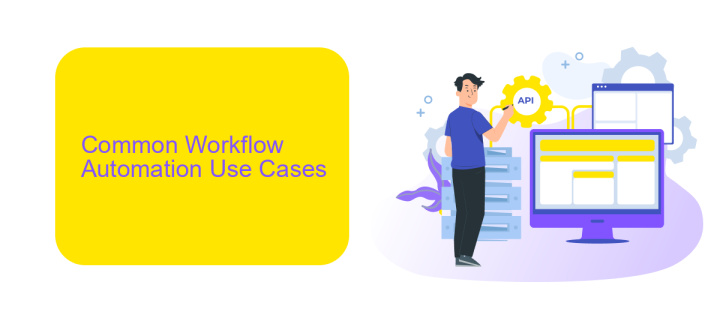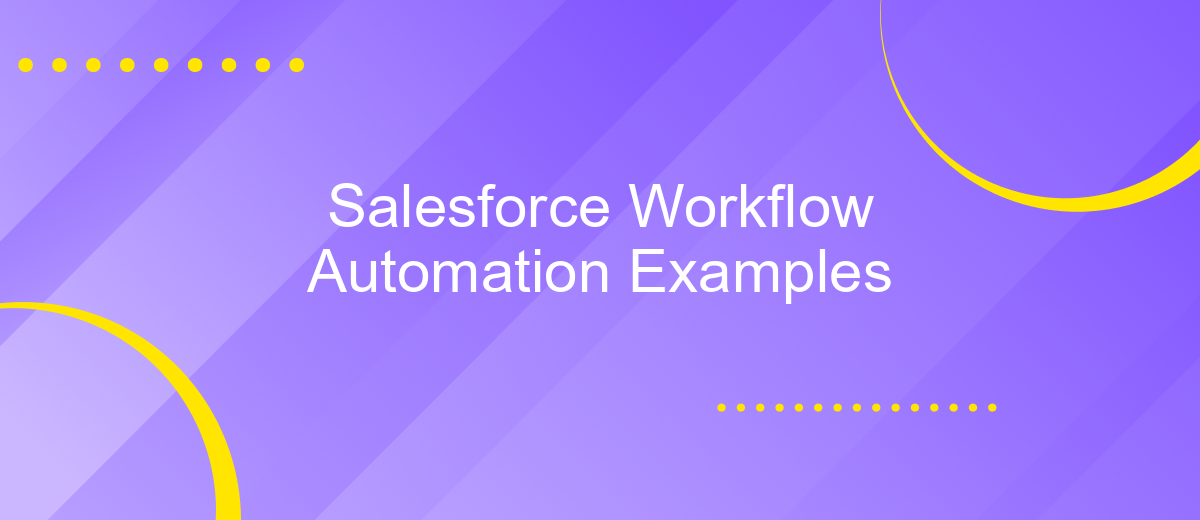Salesforce Workflow Automation Examples
Salesforce Workflow Automation is a powerful tool that streamlines business processes, enhances productivity, and reduces manual tasks. By automating routine workflows, companies can focus on strategic initiatives and improve overall efficiency. In this article, we will explore various examples of Salesforce Workflow Automation, showcasing how it can transform different aspects of your business operations.
Introduction
Workflow automation in Salesforce is a game-changer for businesses looking to streamline their operations and improve efficiency. By automating repetitive tasks, organizations can save time, reduce errors, and ensure consistency across various processes. Whether you are new to Salesforce or looking to optimize your existing workflows, understanding the different automation examples can significantly benefit your business.
- Automated Email Notifications
- Task Creation and Assignment
- Data Updates and Record Creation
- Approval Processes
- Integration with Third-Party Services
One of the key aspects of effective workflow automation is seamless integration with other tools and services. Platforms like ApiX-Drive make it easy to connect Salesforce with various applications, ensuring that data flows smoothly and tasks are automated across systems. By leveraging such integrations, businesses can achieve a higher level of automation and operational efficiency, freeing up valuable time and resources for strategic initiatives.
Common Workflow Automation Use Cases

One common use case for Salesforce workflow automation is lead management. By automating lead assignment, businesses can ensure that leads are routed to the right sales representatives based on predefined criteria such as geography, industry, or lead score. This reduces response time and increases the chances of converting leads into customers. Additionally, automated follow-up tasks and notifications can be set to remind sales reps to engage with leads at optimal times, improving overall efficiency and effectiveness.
Another prevalent use case is customer support automation. Workflow automation can streamline case management by automatically assigning cases to the appropriate support agents based on their expertise or availability. It can also trigger automated responses to common customer queries, providing instant solutions and freeing up support agents for more complex issues. For businesses looking to integrate various applications and services seamlessly, tools like ApiX-Drive can be invaluable. ApiX-Drive enables easy integration between Salesforce and other platforms, ensuring data consistency and enhancing overall workflow efficiency.
Benefits of Workflow Automation

Implementing workflow automation in Salesforce offers numerous advantages that can significantly enhance business operations. By automating repetitive tasks, companies can save time and reduce human error, leading to more efficient processes and better resource allocation.
- Increased Efficiency: Automating workflows streamlines processes, allowing employees to focus on higher-value tasks.
- Cost Savings: Reducing manual labor and errors can lead to substantial cost savings over time.
- Improved Accuracy: Automated workflows minimize the risk of human error, ensuring data consistency and reliability.
- Enhanced Visibility: Workflow automation provides real-time insights into process performance, aiding in better decision-making.
- Seamless Integrations: Tools like ApiX-Drive facilitate easy integration with various platforms, further enhancing the capabilities of automated workflows.
Overall, adopting workflow automation in Salesforce not only optimizes day-to-day operations but also provides a competitive edge by enabling businesses to respond quickly to changing market conditions. With the help of integration services like ApiX-Drive, companies can effortlessly connect their systems, ensuring a smooth and efficient workflow across all departments.
Examples of Salesforce Workflow Automation

Salesforce Workflow Automation streamlines business processes by automating repetitive tasks, allowing teams to focus on more strategic activities. These automations can be tailored to fit various business needs, from lead management to customer support.
One common example is automating lead assignment. When a new lead enters Salesforce, the system can automatically assign it to the appropriate sales representative based on predefined criteria, such as geographic location or product interest. This ensures that leads are promptly followed up on, improving conversion rates.
- Automated email notifications to alert team members of important updates.
- Task creation based on specific triggers, such as a deal closing or a new customer onboarding.
- Integration with external services like ApiX-Drive to sync data between Salesforce and other platforms, enhancing data consistency and reducing manual entry.
By leveraging these workflow automations, businesses can improve efficiency, reduce errors, and ensure that critical tasks are completed on time. Whether it's through internal processes or integrations with tools like ApiX-Drive, Salesforce Workflow Automation provides a robust solution for optimizing business operations.
Conclusion
In conclusion, Salesforce workflow automation offers a powerful means to streamline business processes, enhance productivity, and ensure consistency across various operations. By automating routine tasks, organizations can save time and resources, allowing their teams to focus on more strategic initiatives. The examples discussed highlight the versatility and impact of workflow automation in different scenarios, from lead management to customer service.
Moreover, integrating these automated workflows with external services can further amplify their effectiveness. Tools like ApiX-Drive facilitate seamless integration between Salesforce and other platforms, enabling businesses to synchronize data effortlessly and maintain a cohesive operational environment. As businesses continue to evolve, leveraging workflow automation and integration services will be crucial in staying competitive and responsive to market demands.
FAQ
What is Salesforce Workflow Automation?
What are some examples of Salesforce Workflow Automation?
How can I set up workflow rules in Salesforce?
Can I integrate Salesforce with other applications for better workflow automation?
What are the benefits of using workflow automation in Salesforce?
Time is the most valuable resource in today's business realities. By eliminating the routine from work processes, you will get more opportunities to implement the most daring plans and ideas. Choose – you can continue to waste time, money and nerves on inefficient solutions, or you can use ApiX-Drive, automating work processes and achieving results with minimal investment of money, effort and human resources.

